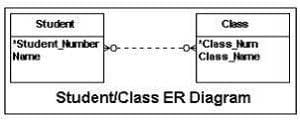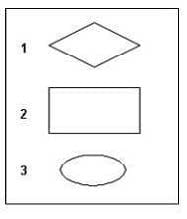Exam Details
Exam Code
:1D0-541Exam Name
:CIW v5 Database Design SpecialistCertification
:CIW CertificationsVendor
:CIWTotal Questions
:128 Q&AsLast Updated
:Aug 22, 2025
CIW CIW Certifications 1D0-541 Questions & Answers
-
Question 31:
Consider the Recreation relation in the exhibit. A data operation that changes one of the tuples for Student_ID 1003 must be performed. It is necessary to change one of the activities from swimming to tennis. The Student_ID and Activity attributes make up the primary key for the Recreation relation. All related information must be altered, as well. Which SQL statement or statements would best accomplish this?

A. UPDATE Recreation SET Activity, Activity_Fee ('Tennis', 100) WHERE Student_ID = 1003;
B. UPDATE TABLE Recreation SET ACTIVITY = 'Tennis', Activity_Fee = 100 WHERE Student_ID = 1003 AND Activity = Swimming;
C. UPDATE Recreation SET Activity = 'Tennis', Activity_Fee = 100 WHERE Student_ID = 1003 AND Activity = 'Swimming';
D. DELETE Activity FROM Recreation WHERE Student_ID = 1003; INSERT INTO Recreation VALUES (1003, 'Tennis', 100);
-
Question 32:
Consider the entity-relation (ER) diagram shown in the exhibit. When the logical database design phase is completed, which of the following is a valid DBDL description of the base relations for the ER diagram?

A. STUDENT( Student_Number: integer NOT NULL Name: variable length character string length 20 NOT NULL) Primary Key Student_Number CLASS( Class_Num: integer NOT NULL Class_Name: integer NOT NULL) Primary Key Class_Num
B. STUDENT( Student_Number: integer NOT NULL Name: variable length character string length 20 NOT NULL) Primary Key Student_Number
CLASS(
Class_Num: integer NOT NULL
Class_Name: integer NOT NULL)
Primary Key Class_Num
Foreign Key Class_Num References STUDENT
C. STUDENT( Student_Number: integer NOT NULL Name: variable length character string length 20 NOT NULL) Primary Key Student_Number STU_CLASS( Student_Number: integer NOT NULL Class_Num: integer NOT NULL) Primary Key Student_Number CLASS( Class_Num: integer NOT NULL Class_Name: integer NOT NULL) Primary Key Class_Num
D. STUDENT( Student_Number: integer NOT NULL Name: variable length character string length 20 NOT NULL) Primary Key Student_Number STU_CLASS( Student_Number: integer NOT NULL Class_Num: integer NOT NULL) Primary Key Student_Number CLASS( Class_Num: integer NOT NULL Class_Name: integer NOT NULL) Primary Key Class_Num
-
Question 33:
Which of the following definitions applies to all types of databases?
A. Data that is stored as tables
B. Software that manipulates data
C. Data that is stored in a structured manner
D. Data records that are stored sequentially in a file
-
Question 34:
Your enterprise must decide whether to use a database management system. Which of the following best describes the overall functionality of a DBMS?
A. A DBMS provides the ability to control data access using Data Manipulation Language.
B. A DBMS provides the ability to maintain databases while providing increased security for the database.
C. A DBMS allows users to access the database while allowing only the database administrator to define user views.
D. A DBMS provides the ability to define, create and maintain databases while providing controlled access to databases.
-
Question 35:
Which of the following best describes the ON DELETE CASCADE referential integrity constraint?
A. If a parent key is deleted, any child keys referenced by the parent key are automatically deleted.
B. If any child key references a parent key, the record containing the parent key cannot be deleted.
C. If a parent key is deleted, all child keys are automatically set to a specified value.
D. If a parent key is deleted, no test is made for referential integrity.
-
Question 36:
In which situation would the DBMS use a serial schedule to execute the transactions?
A. Concurrent transactions read data from the same data structure.
B. Concurrent transactions write data to different data structures.
C. Concurrent transactions read or write the same data structure.
D. Concurrent transactions read or write from different data structures.
-
Question 37:
To create a view, what are the minimal privileges that a user must have for the relations used to make the view?
A. GRANT
B. REVOKE
C. SELECT
D. CREATE VIEW
-
Question 38:
A theta-join can be viewed as:
A. the intersection of two relations.
B. a Cartesian product of two relations.
C. a restricted Cartesian product of two relations.
D. the Cartesian product of two union-compatible relations.
-
Question 39:
What is a relational database domain?
A. A group of attributes
B. A set of permissible tuple values
C. A collection of related data items
D. A set of permissible attribute values
-
Question 40:
Consider the symbols shown in the exhibit. Which of the following correctly identifies these symbols when used in an entity-relationship (ER) diagram?

A. 1 = attribute, 2 = entity, 3 = relationship
B. 1 = entity, 2 = relationship, 3 = attribute
C. 1 = relationship, 2 = entity, 3 = attribute
D. 1 = relationship, 2 = attribute, 3 = entity
Related Exams:
1D0-410
CIW Foundations1D0-430
CIW Application Developer1D0-435
CIW JavaScript Fundamentals1D0-437
CIW PERL FUNDAMENTALS1D0-442
CIW EnterprISE SPECIALIST1D0-450
CIW SERVER ADMINISTRATOR1D0-460
CIW INTERNetworking PROFESSIONAL1D0-470
CIW SECURITY PROFESSIONAL1D0-510
CIW v5 Founfations1D0-51B
CIW V5 Foundations SDF Module
Tips on How to Prepare for the Exams
Nowadays, the certification exams become more and more important and required by more and more enterprises when applying for a job. But how to prepare for the exam effectively? How to prepare for the exam in a short time with less efforts? How to get a ideal result and how to find the most reliable resources? Here on Vcedump.com, you will find all the answers. Vcedump.com provide not only CIW exam questions, answers and explanations but also complete assistance on your exam preparation and certification application. If you are confused on your 1D0-541 exam preparations and CIW certification application, do not hesitate to visit our Vcedump.com to find your solutions here.